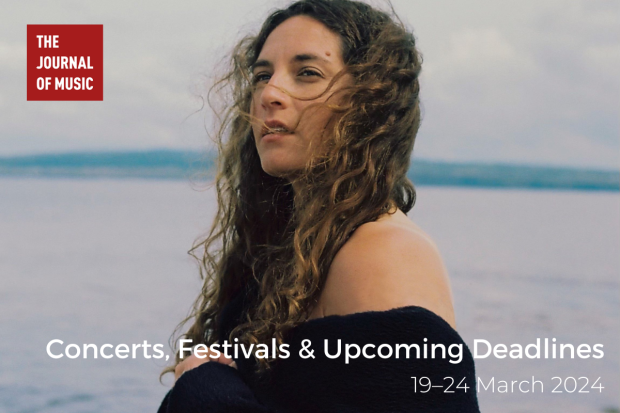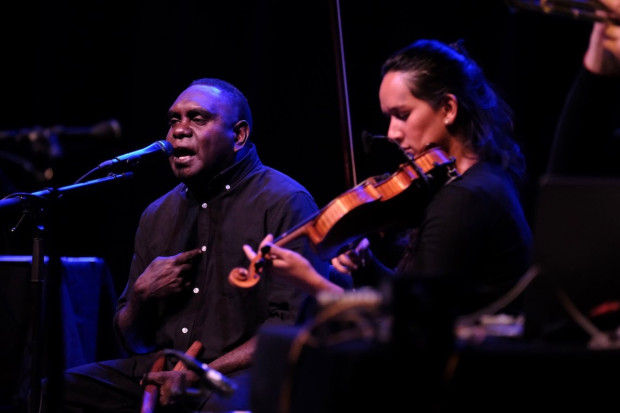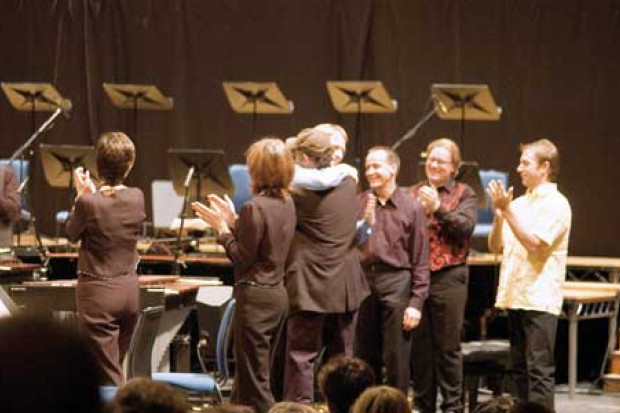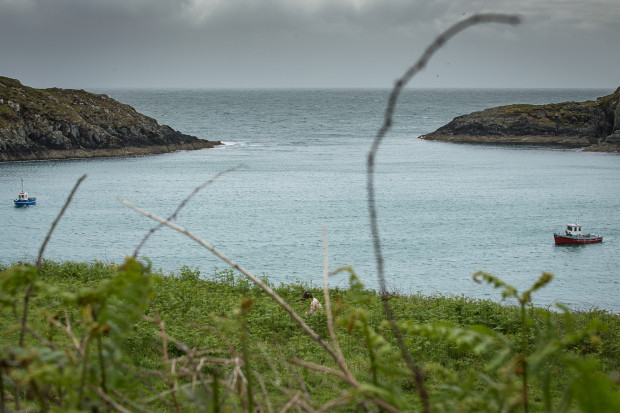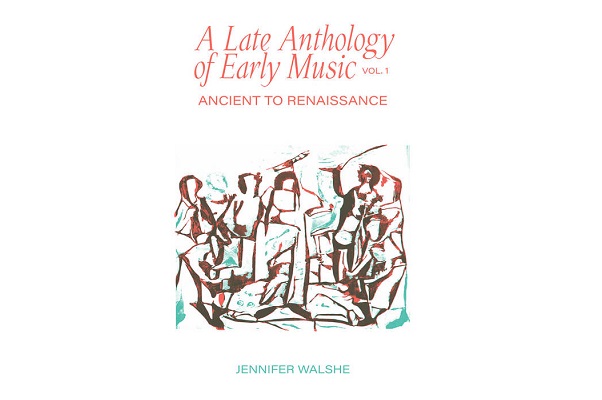
Cassette cover art for Jennifer Walshe's 'A Late Anthology of Early Music Vol. 1'.
Against the Party Line of Western Music
You never know what you’ll get with Jennifer Walshe. Just that, when you press play, it won’t be anything like what you expect. Even if you’ve been told the concept in advance – like, say, her 2008 piano work becher, which hops breathlessly from one famous piano melody to another to another – the effect can be disorienting. The first track on A Late Anthology of Early Music Vol. 1: Ancient to Renaissance, her recently released album, is no different; it’s called the ‘Epitaph of Seikilos’, since it was built on that piece, the oldest known complete piece of music written. It starts by sneezing at you.
This is the third time I’ve covered Walshe for this journal, though the first that I’ve written about something she created under her own name, and not one of her Flann O’Brien-esque alter-egos. The liner notes chart her development of the idea, with little of her usual humour in evidence: it was born of her work teaching music history, and of hearing the development of an AI trained on her voice, developed by the machine learning specialists Dadabots. The latter was refined over 40 cycles of Walshe’s voice. She maps the development of the AI onto the development of music history as she taught it, spanning ‘40 generations of my voice; 40 human generations living and dying over the 1200 years of music history we covered in the first term.’
The tracklist – or at least the list of composers’ names – will look familiar to anyone who’s been through an undergraduate music history course, those hallucinatory first few weeks when you’re whisked through a few hundred years of music history, before time slows, and whole lectures are spent on a single century, or stylistic shift, or composer. Each piece is named for its source, from the Seikilos epitaph up to Tomás Luis De Victoria’s ’O Magnum Mysterium’.
There are 17 tracks on the album, each hovering for a couple of minutes around a single sound, so much so that it’s possible to summarise each in a couple of words. From the opening track’s sneezing fit to the toy box horror of ‘Adam De La Halle: Robins M’Aime, from Jeu de Robin et de Marion’, to the modem noise of ‘Guillaume Du Fay: Se La Face Ay Pale, Ballade’.
Primordial
It’s not always easy to tell where the AI gets the sounds. Some of it is clearly vocal – or oral at any rate: throat, tongue, and teeth, a primordial slop of sound. Sometimes it’s impossible to judge where the AI even got the sound from – the eerie wind of the Gregorian chant ‘Puer Natus Est Nobis’ or the metallic ambience of ‘Jacob Senleches: Fuions de ci, Ballade’, which almost sounds like early Doctor Who soundtracks. It’s only in the Carlo Gesualdo madrigal ‘ “Io Parto” e non più dissi’ that you can really link the more instrumental or electronic-seeming sounds with Walshe’s own voice, as piping brass strains morph into vocal pitches and back.
The whole point of the album is development, the changes in styles across 1200 years reflected in the improvements in the AI’s replication of Walshe’s voice. And as the album progresses, there’s a clear transition from the grasping, groping proto-sounds of the early pieces to the whispered chants from Des Prez and Arcadelt and the later works with what could be described as melody, harmony, even counterpoint.
Party line
Development, though, isn’t the right word. The point of the pieces is that they stand, not improving but changing. The album is a continuum. And there’s an implicit criticism – made explicit in the liner notes, which twice refer to the ‘party line’ of the Western music history textbooks Walshe used – of the notion of teaching music history in this way, built around a simple-to-digest linear narrative, and a narrow worldview. This album is, the composer says, ‘a proposal for a different way of thinking about, listening to and making a history of Western music.’
It was only as the last piece began that I started to wonder about the compositional process of an album like this. When dealing with machine learning, it’s got to be editorial as much as anything, choosing inputs, and maybe on where to begin and end the piece, or which version of the output is best. Were these 17 pieces the only 17 that the AI produced? Or the first 17? Were the 17 listed pieces the only ones that Walshe used? Probably not. The compositional voice exists through the choices the composer made, in her clear fascination with the sound and in her conception and creation of the album itself. And if the humour that signifies a lot of Walshe’s compositional concepts – her alter-egos in Grúpat and Aisteach – seems to be substituted by a more serious approach here, there’s still plenty of it in the compositions, from the first sounds to the last.
To purchase A Late Anthology of Early Music Vol. 1: Ancient to Renaissance, visit jenniferwalshe.bandcamp.com/album/a-late-anthology-of-early-music-vol-1-ancient-to-renaissance
Published on 25 June 2020
Brendan Finan is a teacher and writer. Visit www.brendanfinan.net.











